Who Discovered Australia
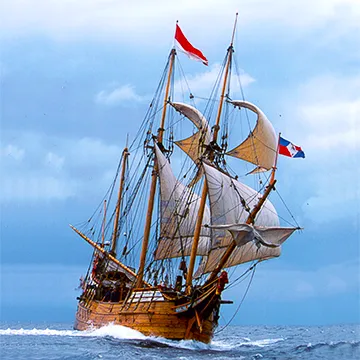
Duyfken (replica) used by Willem Janszoon to discover Australia
Contents
The Discovery of Australia
Australia was first discovered by the Dutch explorer Willem Janszoon on February 26, 1606. Sailing aboard the Duyfken, he and his crew arrived off the Pennefather River in the Gulf of Carpentaria located on the northern coast of Australia. However, Janszoon mistakenly believed the land was part of New Guinea and named it Nieu Zeland (New Zealand), unaware that he had just encountered an entirely new continent.
But it is important to note that while Willem Janszoon was the first European to discover Australia, he was definitely not the first human to arrive in Australia. The first humans to arrive in Australia were the Aboriginals, the native inhabitants of the continent, who arrived over 50,000 years earlier.
What Does Discovery Mean?
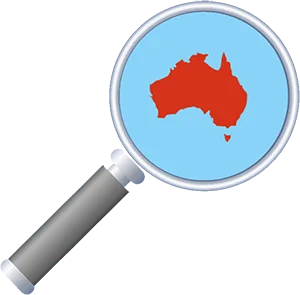
During the Age of Discovery (15th-17th centuries), European explorers sailed the seas, 'discovering' new lands that had been unknown to them till then. These explorers had a nasty habit of claiming these new lands as belonging to their home countries. In doing so, the Europeans often disregarded the rights of the local inhabitants who had lived in these places for thousands of years.
Why Was Australia Important?
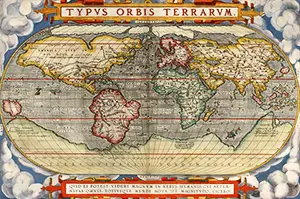
Ptolemy's map of the world with Australia at the bottom
For centuries, Europeans had speculated about a mysterious southern land they referred to as Terra Australis Incognita, meaning the "Unknown Southern Land". The Greek geographer Claudius Ptolemy (150 AD) even included this imaginary land on his maps to "balance" the known world. The dream of discovering Terra Australis eventually led explorers to the vast continent we now call Australia.
First People to Arrive in Australia
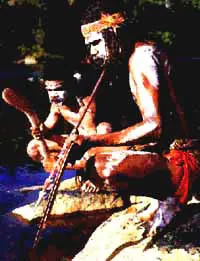
Photo: Aborigines fishing
The Aboriginal People found Australia first. But they had no idea where, in the world, they were. Nor had they been looking for the place. They merely happened to stumble upon the land we call Australia about 50,000 years ago.
The ancestors of the Aborigines walked from Africa around 60,000 years ago and travelled through India, Malaysia, Borneo, Papua New Guinea, and Timor before they were confronted by an ocean that separated Australia from the rest of the world. Since humans had not invented canoes and boats at this time, it is uncertain how they crossed the ocean to Australia. It is most likely that they arrived by accident. One theory suggests they may have drifted on natural rafts or debris.
So while Europeans were searching for the mysterious southern land, the Aborigines had already found Australia and had been living there for over 50,000 years, developing over 250 distinct languages and cultures for thousands of years.
First Non-Native People to Visit Australia — Asians
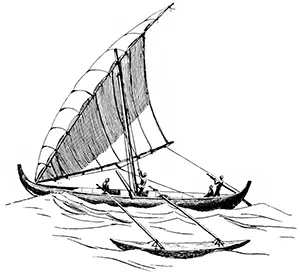
Photo: Indonesian sailing craft
For thousands of years, fishermen and traders from Indonesia, India, and China may have sporadically visited northern Australia. They likely traded goods with the Aboriginal Australians, but their visits were brief and undocumented. The arrival of the dingo in Australia around 5,000 years ago is believed to be linked to these early Asian visitors.
First Europeans to See Australia — Portuguese
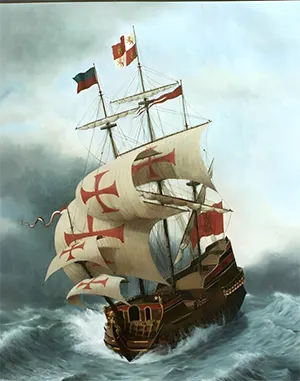
Photo: Portuguese caravel
The Portuguese were the first great European explorers, reaching the island of Timor, just 700 km from Australia, in 1515. Some Portuguese maps from this period appear to depict parts of the Australian coastline, but there is no solid evidence that the Portuguese actually set foot on the continent. They didn't realise that they were sailing past the coastline of Australia.
First Europeans to Land on Australia — Dutch
Willem Janszoon (1616)
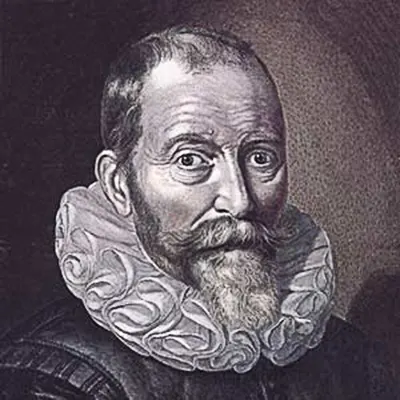
Photo: Willem Janszoon
Willem Janszoon was the first European to discover Australia. On 26 February 1606, the Dutch sailing ship Duyfken, captained by Janszoon, arrived off the Pennefather River in the Gulf of Carpentaria. The crew found the land swampy and the native people there hostile. They lost ten men. Janszoon named the place "Nieu Zeland" (New Zealand) and departed. Janszoon didn't realise he had discovered Australia. He thought the land was part of the island of New Guinea, which is further north.
Dirk Hartog - 2nd European to Land in Australia
In 1616, a Dutch sailing ship, Eendracht, on its way to Indonesia, sailed off course and bumped into the west coast of Australia. Captain Dirk Hartog landed at Shark Bay on the Western Australian coastline, looked around, and didn't find anything interesting there. He nailed an inscribed pewter dish (now at the Rijksmuseum in Holland) to a post on top of a cliff to record his visit and departed. He, too, did not realize that he had found Australia. This was the second recorded European landing in Australia.
Dutch sailors continued to sail along the coastline and called this land New Holland, but they didn't bother to visit it. To them, it seemed just an empty and barren place with no commercial benefit. On 4 July, 1629 VOC ship Batavia was shipwrecked near Houtman Abrolhos, some coral islands near Geraldton, Western Australia. There was a mutiny, and some of the crew built a small fort to protect themselves. This was the first structure built by Europeans in Australia.
Abel Tasman - 3rd European to land in Australia
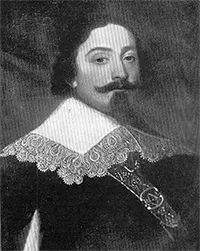
Photo: Abel Tasman
In 1642, a Dutchman named Abel Tasman sighted an island he called Van Diemen's Land (later renamed Tasmania in honour of Abel Tasman). He too didn't realise that this island was a part of Australia. None of these Dutch sailors realised that they had reached Terra Australis Incognita. But they have the distinction of being the first Europeans to set foot on the Australian continent.
First to Confirm Australia Was Continent — British
In 1770, an expedition from England, led by Lieutenant James Cook, sailed to the South Pacific on board the sailing ship Endeavour . Their official mission was to make astronomical observations. However, Captain Cook also had secret orders from the British Admiralty to find the southern continent. This expedition landed on the east coast of Australia on the 29th of April 1770. Cook first called this place Stingray Bay, then he changed it to Botanist Bay, and finally called it Botany Bay because of all the unusual plants there. Cook wasn't impressed with the place and noted in his journal, ' so far as we know [it] doth not produce any one thing that can become an Article in trade to invite Europeans to fix a settlement upon it’. (Translation: As far as I can tell, there doesn't seem to be anything of worthwhile around here that would encourage Europeans to settle here).
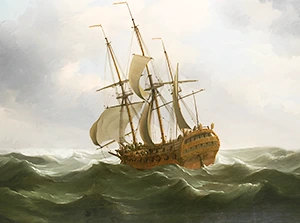
Photo: British East Indiaman ship
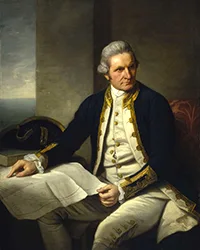
Photo: Captain James Cook
He named this new land New Wales and then changed the name to New South Wales. Captain Cook was also the first European to visit the Great Barrier Reef. Actually, he ran into it and damaged his ship pretty badly. He had to spend seven weeks repairing his ship.
Cook's greatest accomplishment was charting the east coast of Australia. Cook, himself, didn't believe he had found Terra Australis Incognita. He thought the land was New Holland, the same land the Dutch were referring to. To quote his own words in his journal Cook wrote: " ..and altho' I failed in discovering the so much talked of Southern Continent (which perhaps does not exist)..." So it is apparent that he didn't believe the place he was surveying was Terra Australis Incognita. Nevertheless, like many European explorers of the time, he laid claim to the land on behalf of the British. He wrote in his journal ' ...took possession of the whole Eastern Coast from … Latitude 38° South down to this place by the Name of New South Wales together with all the Bays, Harbours Rivers and Islands situate upon the said coast...'
One of the crew members of this voyage was a man named Joseph Banks, and on his recommendation, the British returned, in 1788, to colonise this new land they claimed Cook had discovered, even though the land was already occupied by the Aborigines.
Who Really Discovered Australia & When?
First Humans: The Aboriginals (50,000 BC). They were the first humans to inhabit in Australia. (Strictly speaking, however, they didn't discover Australia in the true sense of the word when used in the context of European exploration).
First European Landing – The Dutch (Willem Janszoon) - 26 February 1606. Janszoon came ashore, named the place "Nieu Zeland", but he thought the land was part of the island of New Guinea, further to the north. So, he only gets credit for being the first European to set foot on the Australian continent.
First to Chart the East Coast – The British (James Cook) - 29 April 1770. They claimed the east coast of Australia for themselves and went on to determine that this place was indeed Terra Australis. They also colonised and settled the whole continent and eventually named it Australia.